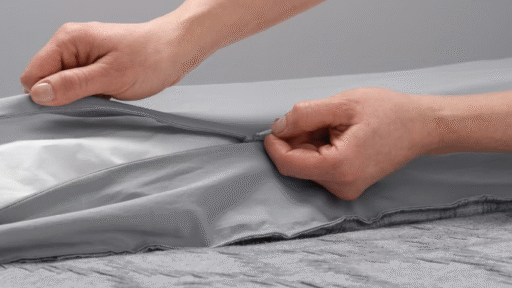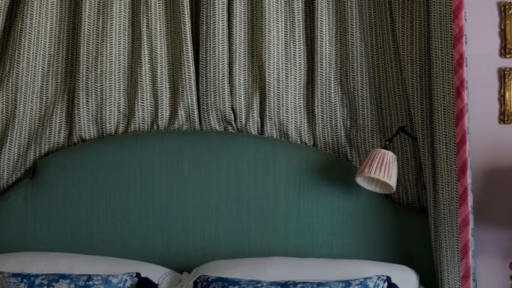A cluttered closet can feel like a weight on your shoulders, making it difficult to find the perfect outfit or even enjoy the clothes you love. If you’ve ever stood in front of a disorganized wardrobe, feeling overwhelmed by the sheer volume of garments, you’re not alone.
1. The Importance of a Decluttered Closet
A decluttered closet is more than just a space to hang your clothes; it’s a sanctuary that can significantly impact your daily life
A well-structured closet not only makes getting dressed a breeze but also instills a sense of calm and clarity in your daily routine.
Furthermore, a decluttered closet can lead to enhanced mental well-being. Studies show that physical clutter can contribute to feelings of stress and anxiety, making it difficult to focus on what truly matters.
In this guide, we’ll explore step-by-step strategies to help you tackle your closet clutter effectively. Whether you’re a fashionista with an overflowing wardrobe or someone who simply needs to streamline their essentials, these tips will empower you to reclaim your space and curate a closet that serves you well. Let’s embark on this transformative journey towards a more organized and inspiring closet together!
2. Assessing Your Current Closet Situation
Start by emptying your closet entirely. Yes, every last item! Lay everything out on your bed or a designated space where you can see it all at once.
As you look over your clothes, observe the variety and quantity:
- Do you have multiple items with similar styles or colors?
- Are there pieces that you haven’t worn in over a year?
Next, categorize your clothes into sections—tops, bottoms, dresses, outerwear, and accessories.
As you sort, take note of any emotional attachments to certain pieces. Some may hold sentimental value, while others may simply be items you thought you’d wear but never did.
Additionally, consider the practicality of each piece.
- Is it truly functional for your lifestyle?
- Does it fit well and make you feel confident?
It’s important to differentiate between items that you love and wear versus those that are just taking up space.
Document your findings to help guide your decluttering journey. Perhaps even take photos of your organized sections to keep track of what you have. This assessment phase is not just about quantity:
- it’s about understanding your personal style
- knowing your needs
- it paves the way for a more curated and functional wardrobe
3. Setting Your Decluttering Goals
Before diving into the physical task of decluttering your closet, it’s essential to take a moment to define your decluttering goals. Setting clear, achievable objectives will provide you with a roadmap and keep you motivated throughout the process. Think about what you want to achieve with your closet transformation.
- Are you aiming for a more organized space, a minimalist wardrobe?
- Is it a way to make room for new pieces?
Begin by assessing your current wardrobe.
- Are there items that you haven’t worn in over a year?
- Are there clothes that no longer fit or that you’ve grown tired of?
Consider the lifestyle you currently lead and how your wardrobe can reflect that. For instance, if you’ve recently switched to a remote working environment.
Once you have a vision, jot down your goals.
- Perhaps you want to reduce the number of items in your closet by a certain percentage
- Maybe you’re aiming to create a capsule wardrobe consisting of versatile pieces
Setting a timeline can also be beneficial. Decide if you want to tackle your closet in a single day or over a series of weekends. Breaking the task into manageable chunks can prevent feelings of burnout.
4. Preparing for the Decluttering Process
Start by dedicating a specific day or weekend for this task.
- Choose a time when you can focus without interruptions
- Gather all necessary supplies: sturdy garbage bags or bins for donations
- A box for items that need repairs
- A notepad for any shopping lists you might need in the future.
Having everything at your fingertips will help streamline the process.
- Next, clear out the space around your closet
As you prepare mentally, remind yourself of your goals.
- Are you aiming for a minimalist wardrobe, or do you want to curate a more versatile selection of clothing?
- Having a clear vision will guide your decisions and help you stay focused.
Finally, set a timer or allocate specific blocks of time for different sections of your closet. This will help prevent overwhelm and keep you on track, allowing for short breaks in between to recharge.
5. The Four-Box Method: Keep, Donate, Sell, and Trash
By categorizing your clothes into four distinct boxes—Keep, Donate, Sell, and Trash—you’ll gain clarity and purpose as you sift through your garments, making the decision-making process much easier.
Keep Box
This box is reserved for items that you truly love and wear regularly.
As you sift through your wardrobe, ask yourself: Does this piece fit well? Do I feel confident when I wear it? Is it versatile enough to pair with multiple outfits? Only the items that make you feel your best should find their way into this box. Remember, it’s not just about what looks good—it’s about what feels good too.
Donate Box
Clothes that are in good condition but no longer serve you belong in the Donate box. These are items that you once loved but may not wear anymore due to changes in style, size, or lifestyle.
Donating clothes keeps them out of landfills and gives them a second life with someone who will appreciate them.
Look for local charities or shelters that accept clothing donations, and feel good knowing your old favorites could bring joy to someone else.
Sell Box
If you have high-quality or designer items that you no longer wear, consider placing them in the Sell box. Platforms like Poshmark, Depop, or even local consignment shops can help you turn those unworn treasures into extra cash.
Just ensure that the pieces are clean and in excellent condition; a little effort in presenting them can yield great returns.
Trash Box
Finally, the Trash box is for items that are beyond saving. If clothes are torn, stained, or simply worn out, it’s time to let them go. Holding onto these pieces only clutters your space and mental peace. Remember, it’s okay to say goodbye to items that no longer serve a purpose.
6. Seasonal vs. Year-Round Wardrobe: What to Keep
a) Seasonal Wardrobe
These are the items that are essential for particular seasons and climate conditions.
- cozy sweaters
- heavy coats
- winter boots for the colder months
- sun dresses
- shorts
- sandals for summer
As you sift through your clothing, separate these pieces into clear categories: winter, spring, summer, and fall. This process not only makes it easier to identify what you own but also highlights gaps in your wardrobe that you may need to fill for the upcoming season.
b) Year-Round Wardrobe
In contrast, your year-round wardrobe consists of versatile staples that can be mixed and matched regardless of the season. These include;
- classic basics like a well-fitted pair of jeans
- a tailored blazer or a little black dress
These are the building blocks of your wardrobe, capable of transitioning seamlessly from season to season with just a few accessory changes or layering adjustments.
When deciding what to keep, ask yourself:
- Does this piece fit well? Is it comfortable?
- Do I love how I feel when I wear it?
Aim for a curated selection that reflects your personal style and can adapt to different occasions.
7. Tips for Deciding What to Let Go Of
Deciding what to let go of can be one of the most challenging parts of decluttering your closet, but it’s also the most liberating. To simplify this process, consider these practical tips that can help you make those tough decisions with confidence.
a) The ‘One-Year Rule’: Start by assessing each item in your closet with a critical eye. If you haven’t worn a piece in the last year, it’s time to consider whether it deserves a spot in your wardrobe.
This rule encourages you to let go of clothes that no longer serve you and frees up space for items that reflect your current style and lifestyle.
b) Quality Over Quantity: Evaluate the quality of your clothing. If an item is worn out, faded, or damaged beyond repair, it’s better to part ways with it. Invest in high-quality pieces that you’ll cherish and wear often, rather than holding onto items that no longer meet your standards.
c) Emotional Connection: It’s natural to have an emotional attachment to certain garments, perhaps because they remind you of a special occasion or a time in your life.
However, ask yourself if these memories can be cherished without the physical item. If the clothing doesn’t bring you joy or isn’t part of your everyday wardrobe, it might be time to let go.
d) Try the ‘Maybe’ Pile: If you’re struggling to make a decision, create a ‘maybe’ pile. Place items you’re uncertain about in this category, and revisit them after a month. If you still haven’t reached for them, they’re likely not as essential as you thought.
e) Consider Your Lifestyle: Take a moment to think about your current lifestyle and daily activities. Are your clothing choices aligned with how you live now? If you’ve transitioned to a more casual lifestyle, for example, those formal dresses and tailored suits may not be necessary.
f) Visualize Your Ideal Wardrobe: Picture the closet of your dreams. What types of clothes do you see yourself wearing? As you sift through your items, ask whether each piece aligns with this vision. If it doesn’t, it may be time to say goodbye.
g) Seek a Second Opinion: Sometimes, a fresh perspective can make all the difference. Invite a trusted friend or family member to help you through the process. They can provide an objective viewpoint and gently encourage you to let go of items you may be clinging to unnecessarily.
8. Organizing Your Remaining Clothes Effectively
Once you’ve sifted through your wardrobe and made those tough decisions about what to keep, it’s time to focus on organizing your remaining clothes effectively.
Start by categorizing your clothes into distinct sections. You might consider grouping items:
- By type – such as shirts, pants, dresses, and outerwear.
- By occasion – like workwear, casual outfits, and evening attire.
This will allow you to quickly locate what you need without rummaging through a sea of fabric.
Next, think about the way you hang or fold your clothes. For items that are prone to wrinkling, like blouses and suits, a good-quality hanger can make all the difference.
- Opt for matching hangers for a cohesive look and to maintain the shape of your garments
- Consider utilizing cascading hangers for tops to maximize vertical space
- For your folded items, use drawer organizers or dividers to keep items neatly stacked and easily accessible
Also, don’t forget about the power of visibility. Consider using clear storage bins or labeled boxes for seasonal items or less frequently worn pieces.
Lastly, make the most of your closet’s vertical space. Incorporate shelves or utilizing the floor space with stylish baskets. These can hold accessories, shoes, or even out-of-season clothing, keeping everything tidy and easy to find.



